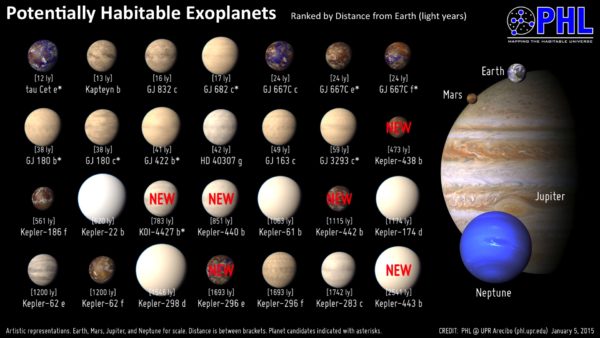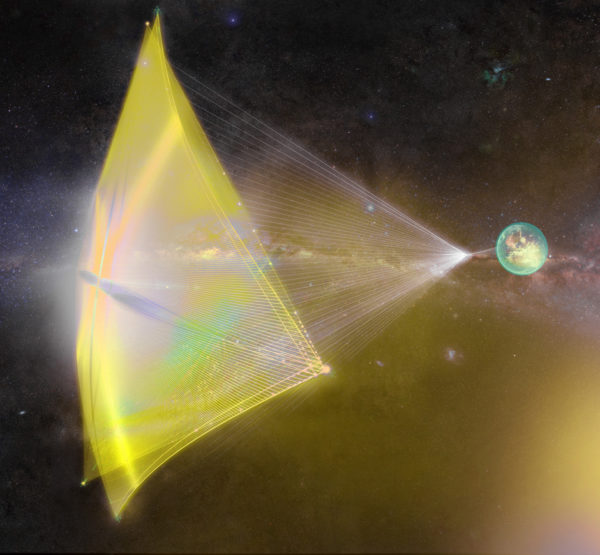"Our existence in this place, this microscopic corner of the cosmos, is fleeting. With utter disregard for our wants and needs, nature plays out its grand acts on scales of space and time that are truly hard to grasp. Perhaps all we can look to for real solace is our endless capacity to ask questions and seek answers about the place we find ourselves in." -Caleb Scharf
Now that we’ve learned the nearest star to our Sun, Proxima Centauri, has a rocky planet at the right distance for liquid water, it’s time to consider how we might learn the answers to our burning questions about it and all nearby Earth-like exoplanets. What’s the atmosphere like, and what does it consist of? What does the surface of the world look like, and what’s on it? And is there life, or intelligent life, present at all?
 Image credit: PHL @ UPR Arecibo, as of 2015. This number has almost doubled since this image was published, and at a distance of 4.24 light years, Proxima b is now the closest of all.
Image credit: PHL @ UPR Arecibo, as of 2015. This number has almost doubled since this image was published, and at a distance of 4.24 light years, Proxima b is now the closest of all.
There are three ways to conduct these searches, and they’re all complementary. We can use giant ground-based telescopes, including arrays of telescopes, for high-resolution spectroscopic images of these worlds. We can use space-based telescopes with coronagraphs or starshades to image these worlds directly over time. Or we could undertake a journey across space, and visit the system directly to obtain in situ measurements we could never get from afar.
- Log in to post comments


“If this doesn’t inspire you to invest in astronomy and learning more about the Universe, perhaps nothing will!”
Oh, well.
Perhaps you can get the investment from someone else.
Try Obama.
Or maybe the Clinton Foundation.
Sending a robotic probe to Proxima Centauri at 0.2c would be a daunting challenge to say the least. A big problem would be how to protect the probe from interstellar debris in its path as it makes the journey. If the probe's moving at 0.2c, a micrometeoroid the size of a grain of sand (mass of 0.67 mg) in its path would hit it with about as much energy as the detonation of a 270 kg charge of TNT (1.2 GJ). Most treatments of relativistic spaceflight in fiction I've seen seem to gloss over this particular detail. Space, while mostly empty, is not [i]completely[/i] empty, and when you're moving at an appreciable fraction of the speed of light even grains of sand have the energy of bombs.
Everyone was already aware that you have no interest in the subject of the blog. The only question is why you show up anyway.
Proxima B sure doesn’t appear hospitable to life as we know it, especially given the “rather infamous temper” of its sun, Proxima Centauri.
No problem.
Evolution and glowing aliens to the rescue!
As one might say,
if this doesn’t inspire you to invest in astronomy and learning more about the Universe, perhaps nothing will!
http://news.nationalgeographic.com/2016/08/planet-proxima-centauri-life…
"[W]ith his mighty wind shall he shake his hand over the river, and shall smite it in the seven streams, and make men go over dryshod."
There is something dead in people who greet one of the greatest discoveries ever made with snark and cynicism.
AC, how likely is there to be a micrometeorite on the straightline course to Proxima b? Here's a scientists' method to work on this problem: If it found ONE, how much matter is there in our galaxy that would make that the expected number of collisions? How does that compare to the mass of the galaxy we inhabit?
I'm such a nerd...this is so exciting....